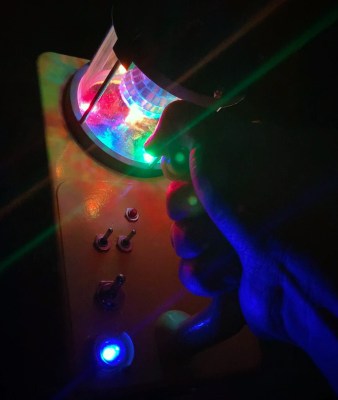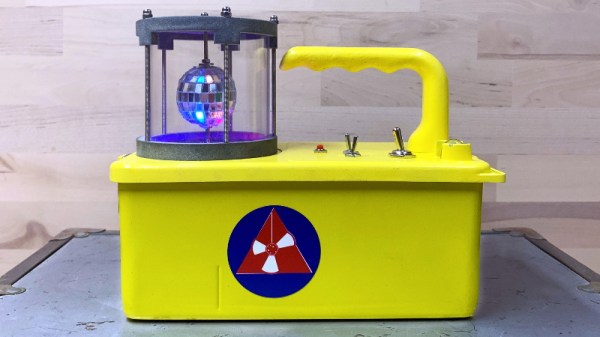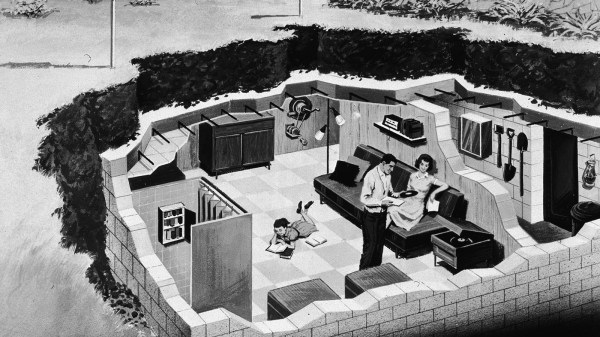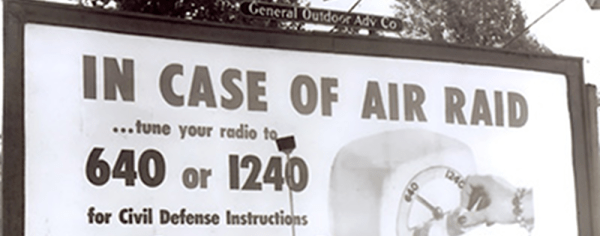Old Civil Defense survey meters like the V-715 are interesting conversation starters, but of very little practical use today. These devices were intended to be a sort of litmus test that survivors of a nuclear blast could use to determine when it was safe to venture out of their radiation shelter: if the needle on the meter moves, even when it’s on the most sensitive setting, you should probably go back inside. Since [Hamilton Karl] would (hopefully) never need such an indicator, he decided to have a little fun with this Cold War holdover and turn it into a Disco Containment Unit.
 Technical details are a little sparse on this one, but we can infer most of it just from the pictures. In place of the original meter [Hamilton] has mounted a tiny mirrored ball inside of a protective cage, which is spun by a geared motor that’s occupying the space that used to be taken up by the ion chamber.
Technical details are a little sparse on this one, but we can infer most of it just from the pictures. In place of the original meter [Hamilton] has mounted a tiny mirrored ball inside of a protective cage, which is spun by a geared motor that’s occupying the space that used to be taken up by the ion chamber.
A handful of Adafruit NeoPixel RGB LEDs, an Arduino Nano, and a few switches to control it all round out the functional aspects of the build, and a new disco-themed trefoil replaces the original Civil Defense logo on the side. The project page mentions there’s a piezo buzzer onboard that performs a stirring rendition of “Stayin’ Alive” by the Bee Gees, but alas there’s no video that shows it in action.
Thanks to the rugged construction and built-in handle of these old survey meters, [Hamilton] can now take the party with him wherever he goes. Not that he can really go anywhere with this whole global pandemic hanging over our heads, but at least he’ll be ready when things start trending towards normal. In a way the device’s functionality has now been reversed from how it originally worked, since the meter going wild will now be an indicator that its safe to come out.
While the V-715 isn’t of much use outside of a post-apocalyptic hellscape, the V-700 is actually a proper Geiger counter that’s still useful for surveying or research. An important distinction to remember if you ever get a chance to snap one of them up at a swap meet or flea market. Whenever we can start having those again, anyway.













